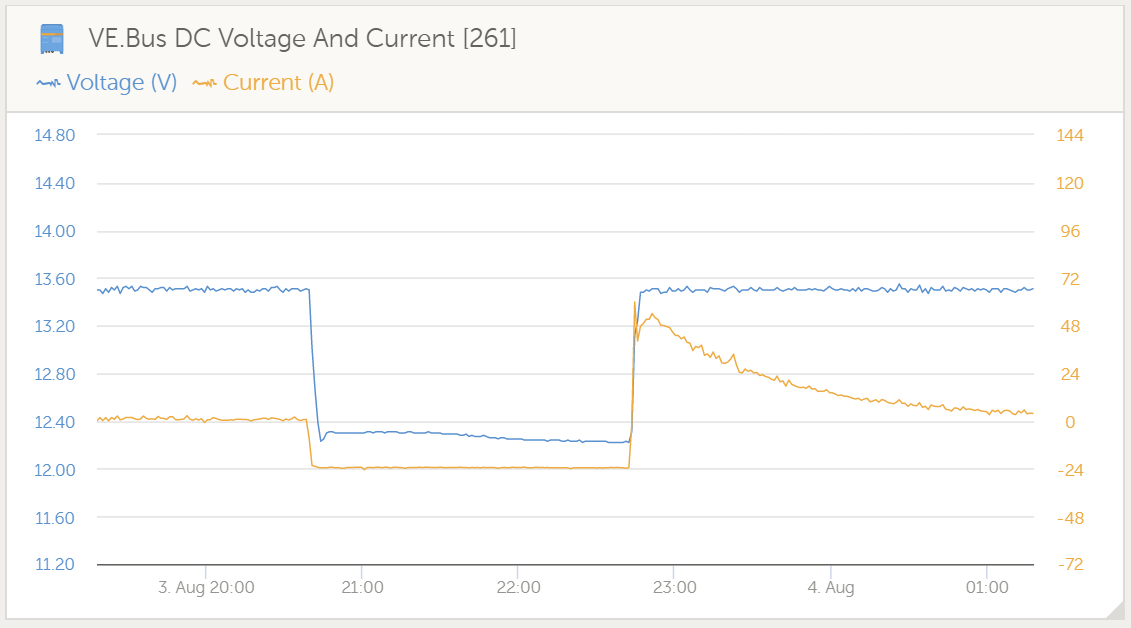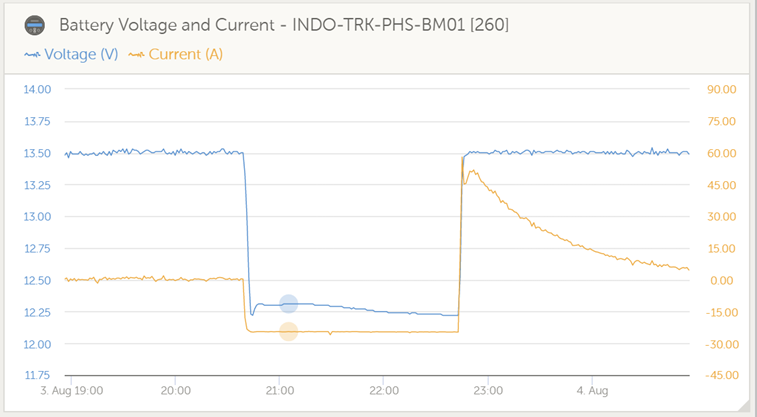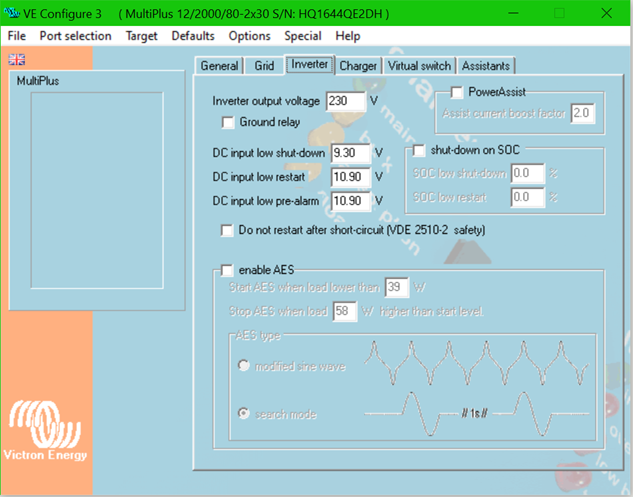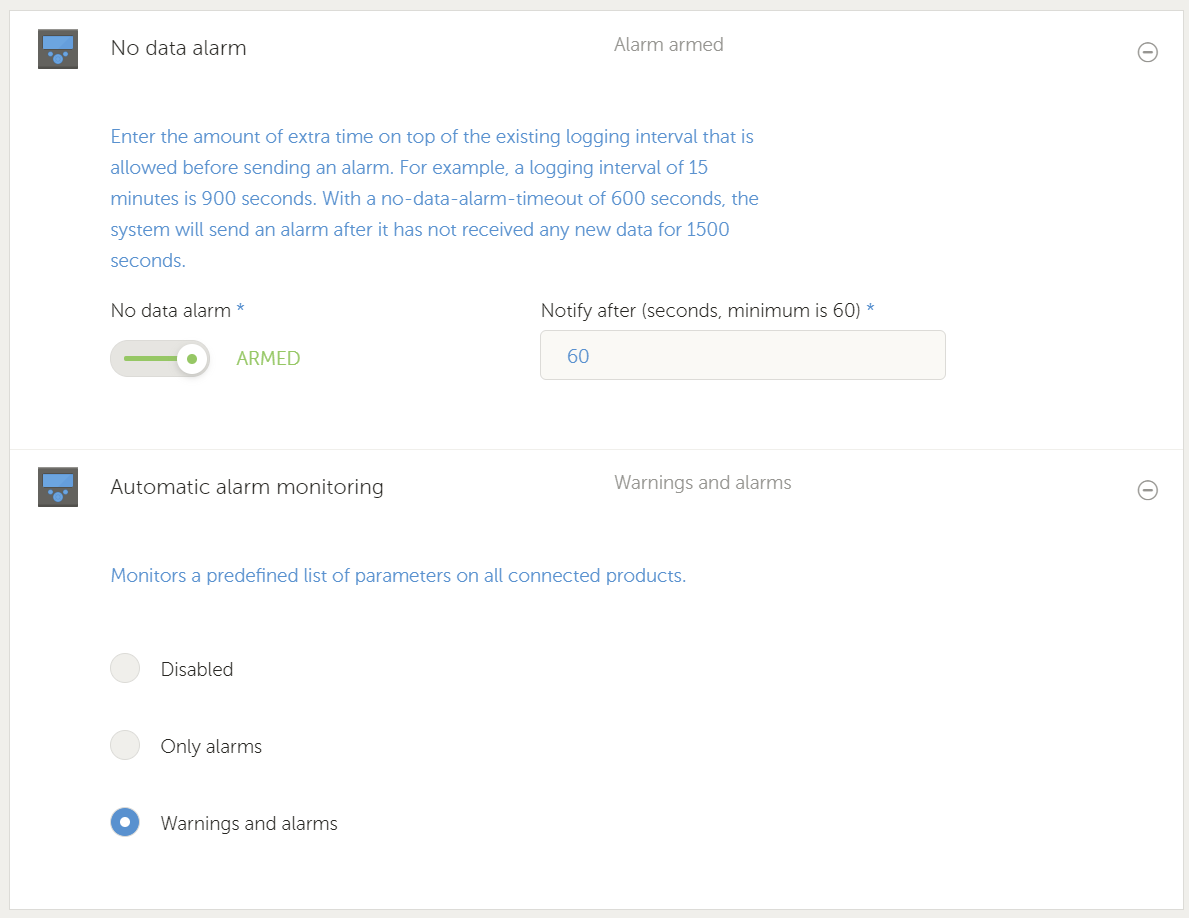I am getting Low Battery warning at a voltage that is different than configured in the settings. The pre-alarm is set to 10.9V, the ESS assistant is configured to do a cut-off at 12V@0.005C, yet, I am getting alarms when voltage drops below 12.25V at a much higher discharge rate. The battery monitor Voltage reading = VE.Bus DC Voltage reading so it doesn't look like a cabling issue.
What am I missing?
I am using VE.Bus firmware 465.








